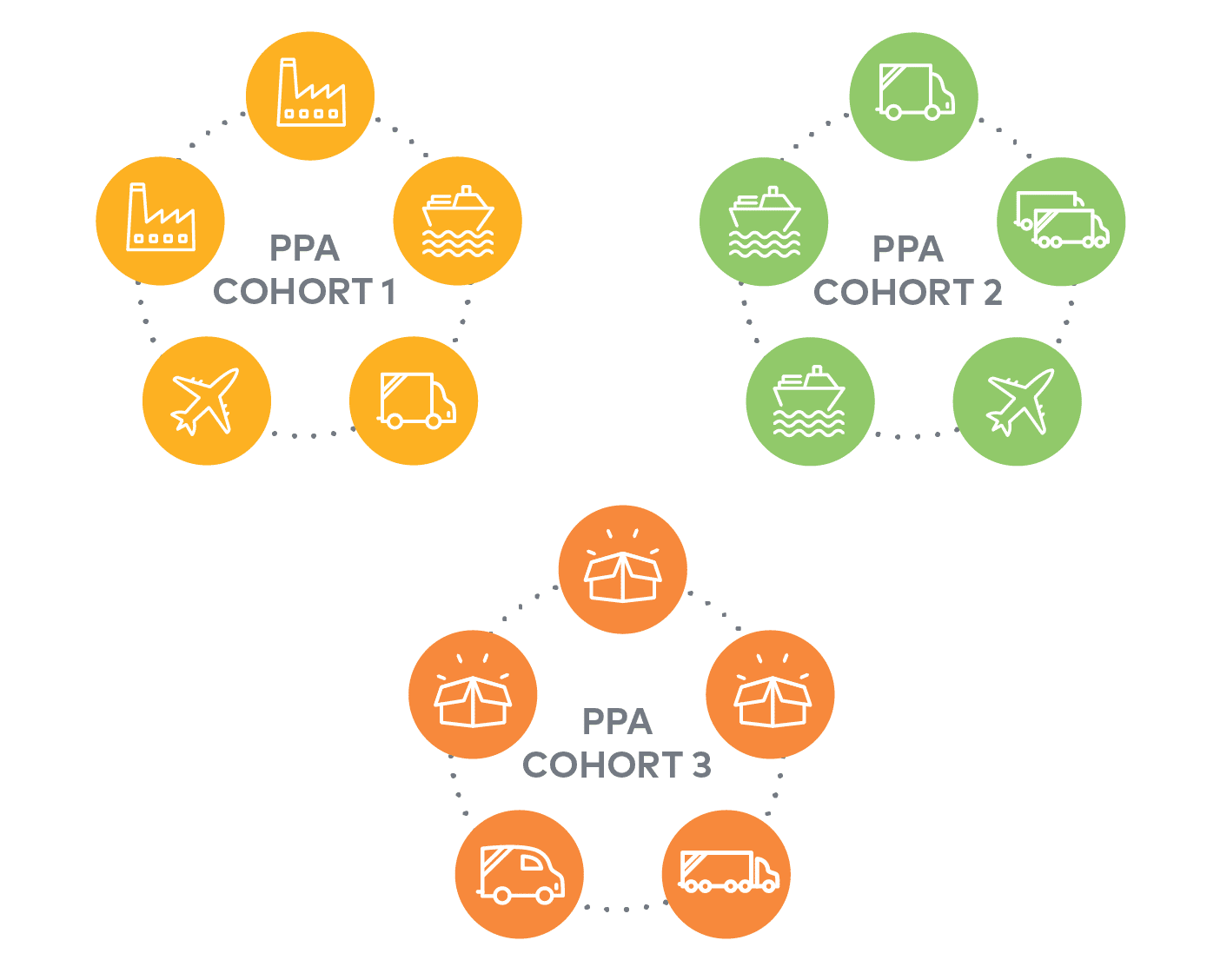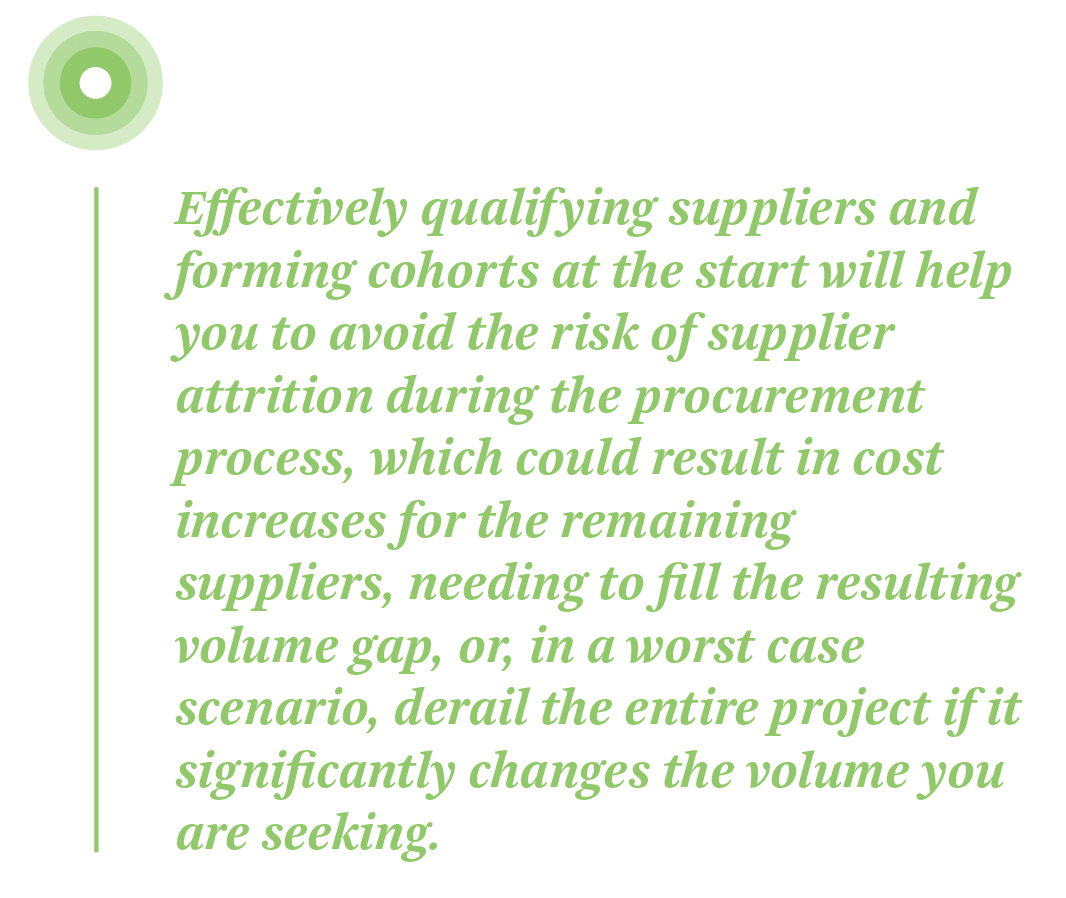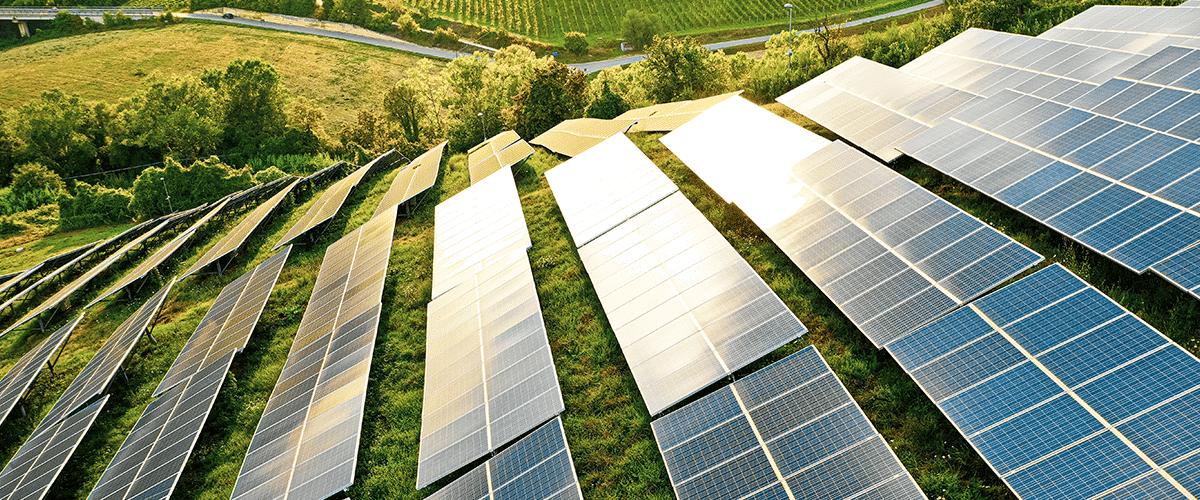The climate action journey is long, and luckily numerous companies have already gotten started. Many are taking steps to address their scope 2 electricity emissions through implementing energy efficiency, purchasing energy attribute certificates (EACs), executing power purchase agreements (PPAs), or other measures. While that’s a great start, most organizations’ scope 3, or indirect emissions, make up more than 90% of their total greenhouse gas (GHG) emissions inventory. So, as climate target deadlines quickly approach, it’s time to start taking action on your scope 3 in addition to your scope 2.
When looking at the makeup of your scope 3 footprint, if the electricity emissions in your supply chain are significant, a supplier PPA aggregation could be an ideal reduction pathway to pursue. In a renewable energy PPA aggregation, multiple buyers come together and pool their purchasing power to execute a PPA. When working with your suppliers, you would engage them to do the same in a supplier PPA aggregation. This renewable energy procurement would address not only your suppliers’ scope 2 electricity emissions, but also your scope 3. When considering this approach, it may be effective for you to assume the role of the “anchor tenant” – an offtaker that is taking a sizable portion of the PPA volume. However, simply participating in the aggregation as one of the buyers also demonstrates the commitment of the entire buyer group to developers and can help get deals done.
In this article, we’ll take you through benefits, possible structures, and other components of a successful supplier PPA aggregation.
BENEFITS OF A SUPPLIER PPA AGGREGATION
Moving forward with a PPA aggregation offers several benefits to both companies and their suppliers. There are the obvious environmental benefits that come from any PPA, such as helping to add a new renewable energy project to the grid, but supplier aggregations also help to:
![]()
![]()
Enable first-time or smaller buyers to gain market access by providing the opportunity to participate in large-scale projects that may have been otherwise inaccessible.
![]()
![]() Reduce transaction costs for all participating suppliers by allowing them to pool their resources and effort.
Reduce transaction costs for all participating suppliers by allowing them to pool their resources and effort.
![]()
![]() Accelerate suppliers along the learning curve in the renewable energy procurement process by giving them the opportunity to team up and learn together.
Accelerate suppliers along the learning curve in the renewable energy procurement process by giving them the opportunity to team up and learn together.
![]()
![]() Allow your company – and your suppliers – to meet climate action goals sooner than you would otherwise be able to due to the larger renewable energy volumes involved.
Allow your company – and your suppliers – to meet climate action goals sooner than you would otherwise be able to due to the larger renewable energy volumes involved.
![]()
![]()
Make you an industry leader that is delivering significant reductions to your scope 3 emissions.
PHASES OF A SUPPLIER PPA AGGREGATION
Supplier PPA aggregations are complicated. There are many organizations involved, which each have individual needs that the program must manage effectively. Through our experience with supplier engagement and PPA aggregations, we have found that a successful program typically has the following key components.
1. Supplier engagement and scope 3 measurement
As a prerequisite, it’s best to have measured your scope 3 electricity emissions to confirm whether electricity makes up a meaningful amount of your suppliers’ emissions and understand how they break down by supplier. Once you’ve done that, you’ll use the data to determine three things:
- How to encourage supplier participation;
- How to segment your suppliers; and
- Which suppliers you would like to approach for a PPA aggregation
You can set the stage for a successful PPA aggregation program by aligning it with your goals. Start by defining your expectations, as well as how you will encourage supplier participation—through either mandates or incentives.
As for supplier segmentation, your approach can be based on where your company believes it will have the most success or simply where emissions are concentrated, whether that be by location, type of supplier, or other factors. It’s important to note, however, that the number of suppliers that are good candidates for a PPA aggregation is likely to be a small subset of your supply chain.
2. Supplier education
A key component of supplier engagement is education, and making sure that supplier stakeholders have the necessary baseline knowledge to take action, whether it be through a PPA aggregation or another form of renewable energy procurement. In general, you will want to ensure participating suppliers understand not only the basics of GHG accounting and reductions, but also the landscape of renewable energy procurement options.
For suppliers that are identified as good candidates for a PPA aggregation, you’ll want to make sure they also have an in-depth understanding of PPAs to confirm that they are ready for the complexities of this type of procurement.
3. Renewable energy strategy
Since each of your suppliers will have different preferences and constraints when it comes to purchasing renewable energy, it is important to determine the best-fit implementation pathway for each. More mature companies will be better candidates for PPAs, while others will be better suited to purchasing energy attribute certificates (EACs) to address their electricity usage.
Once these determinations have been made, you can then form cohorts amongst your suppliers to enable strength in numbers. In forming PPA or EAC cohorts, sort suppliers by those with similar needs and attributes, such as geographic load, readiness to procure, and more. It’s also important to make sure suppliers are aligned on their procurement targets, as well as their general project evaluation criteria.


4. PPA execution
All of the prep and engagement work then culminates in actually facilitating PPA aggregations for your cohorts, so that you can ultimately achieve measurable scope 3 emissions reductions. An aggregated procurement includes all of the standard steps – issuing a request for proposals (RFP), evaluating and selecting projects, and negotiating and executing PPA contracts – except instead of a single buyer and decision-maker, all suppliers in the cohort will need to move through the process together as a group.
Once the PPA contract is negotiated and executed, the project will obtain financing and commence construction, ultimately achieving commercial operation ~1.5-2 years after the contract is signed. Then, you and your suppliers will be able to monitor PPA performance and you’ll begin seeing the reductions across your scope 3 footprint.
ESSENTIAL INGREDIENTS FOR A SUCCESSFUL SUPPLIER AGGREGATION
While navigating these engagements, we have found a few essential ingredients to enable a successful PPA aggregation for suppliers:

 Leadership:
Leadership:
Whether it is one organization or a consortium of companies facilitating a supplier PPA aggregation, it is helpful for them to be clear on their goals and involved in the process themselves. More direct involvement is better in order to motivate suppliers to participate.

 Participants:
Participants:
It is beneficial to be both thoughtful and realistic about the number of suppliers that you would like to participate in a PPA aggregation program. As mentioned above, the subset of suppliers who are ready and able to execute a PPA is fairly limited, so it’s important to identify those that are most likely to be successful as part of an aggregation.



 Getting it done:
Getting it done:
If your company doesn’t have the resources internally, make sure to work with a trusted advisor to help facilitate and guide the process with clear planning, scheduling, and communication. Partnering with an expert in both renewable energy procurement and stakeholder management can help keep you and your group of suppliers on track for a successful PPA execution, and avoid an environment with a lack of leadership or expert market knowledge.
ACHIEVING SUCCESS IN A SUPPLIER PPA AGGREGATION
While PPA aggregations are complex, meeting climate goals, especially related to scope 3 emissions, will require increasing collaboration between companies and their supply chains. In our experience, companies cannot be hands off and achieve a successful supplier PPA aggregation – active participation by the convening company encourages supplier participation and leads to a true collaboration that can benefit all parties.
Reach out to learn more about supplier PPA aggregations and how 3Degrees can help you run a successful program.

